The oil slick appears to be floating on the ocean. Then the smell hits you.
Nicknamed “sea sawdust”, blue green algae bacteria Trichodesmium The typical coral sea is blue away from the browns, greens and pinks of Mackay’s coastline.
This bacterium, which is slightly toxic to humans, usually lives on the ocean floor, but when conditions are still and warm, it blooms and rises to the surface to die and rot.
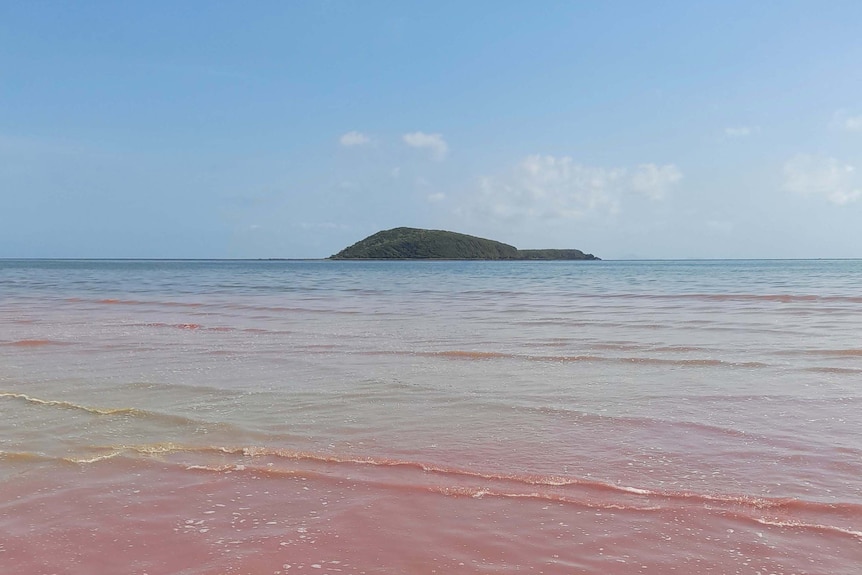
A bacterial bloom has turned the water at Shoal Point, Mackay, shades of pink and green. (Submitted by: Cassandra Ramsey)
Surfer Dwayne Close says the “soft stuff” usually appears when the surf has been off for a few days.
“It’s a little hard to describe and it has a bit of a pongy smell. Sometimes it doesn’t smell very good, but you get used to it,” he said.
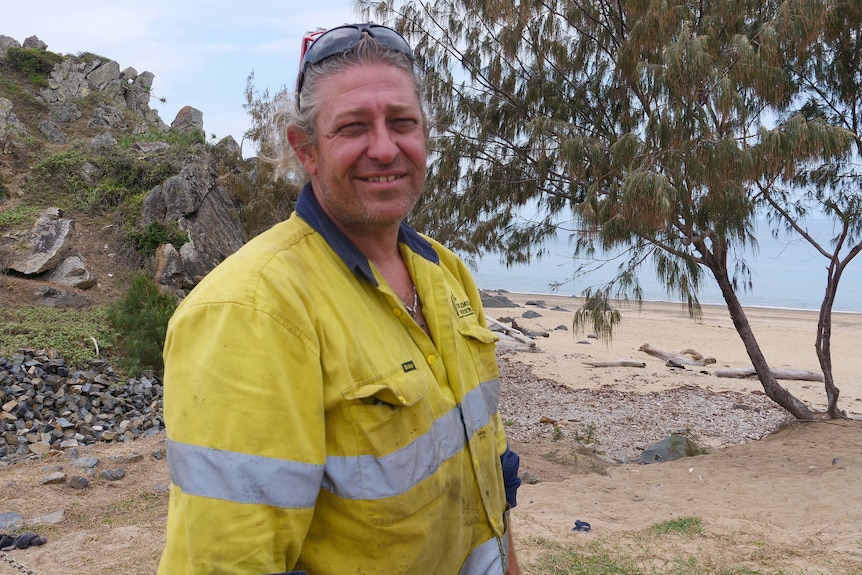
Dwayne Close examines conditions at Lamberts Beach. (ABC Tropical North: Jenae Madden)
Most marine life won’t touch this filamentous mass, but Queensland scientists have discovered that crown-of-thorns starfish (COTS) larvae eat the bacteria, the only animal to do so.
They say a better understanding of sea sawdust could be a clue to help control the starfish population that has ravaged part of the Great Barrier Reef.

Crown-of-thorns starfish feeding on coral in the Great Barrier Reef. (Provided by: Australian Institute of Marine Science)
Crown of thorns grows on bacteria
Benjamin Moss, a marine scientist at the University of Queensland, says the crown-of-thorns starfish has a huge appetite for hard corals and can occur in plague proportions.
Young starfish normally eat small plants, but when the scientists fed them sea sawdust, they grew.
Larvae can access these cyanobacteria [blue-green bacteria] as food and actually use it to promote their development and growth.”
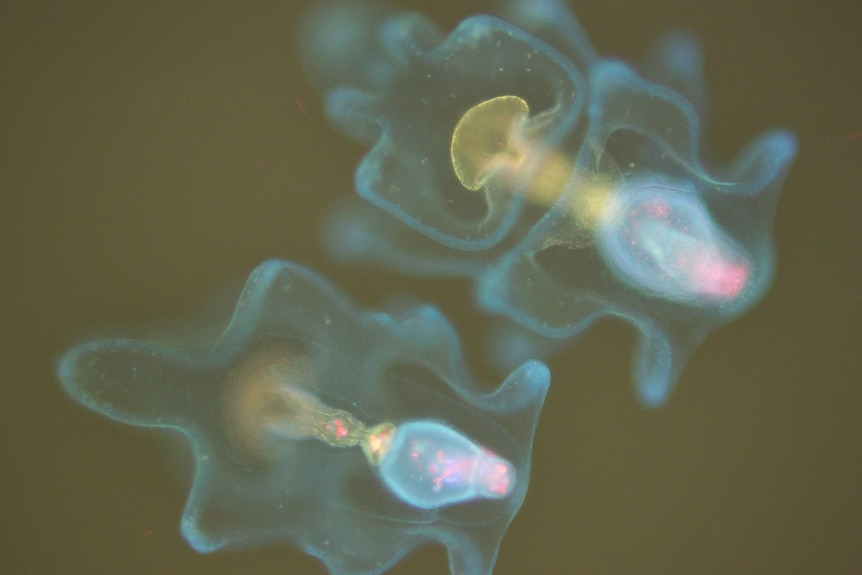
Two-week-old crown-of-thorns starfish larvae under a fluorescence microscope. The pink dots are microalgae food. (Submitted by: Corinne Lawson, SCU)
Dr. Moss suspected that the increased number of crowns of thorns was related to additional food sources for the larvae.
He worries about the long-term impact on the reef if starfish spawn in greater numbers.
“[They] They can grow up to one meter, and in an outbreak can grow to 100 animals in an area the size of a football field.
So if you have 100 animals and each of those animals can eat a square meter of coral every two or three days, it doesn’t take much math to figure out that they can literally eat coral reefs very quickly.
Loading…
Current control methods are limited to attacking the crown of mature thorns and injecting vinegar or coarse and liquid salts.
“We are definitely concerned about the outbreak [of sea sawdust] as another of these effects, which only adds to the negative effects on the colonies.” Dr. Moss said.
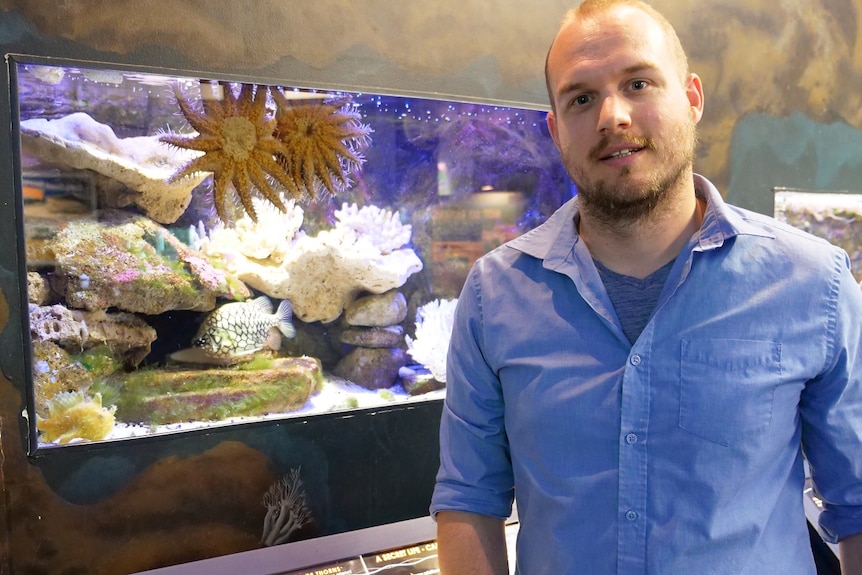
Benjamin Moss says the crown of thorns starfish can be as long as 1 meter. (ABC News: Melissa Martin)
His research colleague, Simon Dvorjanin of Southern Cross University, said the findings could help solve the “puzzle” of crown-of-thorns starfish population growth.
“If we can figure out how to reduce the impact of COTS, we might give coral reefs a bit more time,” said Professor Dorjanin.
Scientists now hope to find larvae that eat the algae in the wild and outside the lab.
They believe that if they can incorporate the spread of algal blooms into their “population models,” they will be one step closer to preventing mass destruction of hard corals.
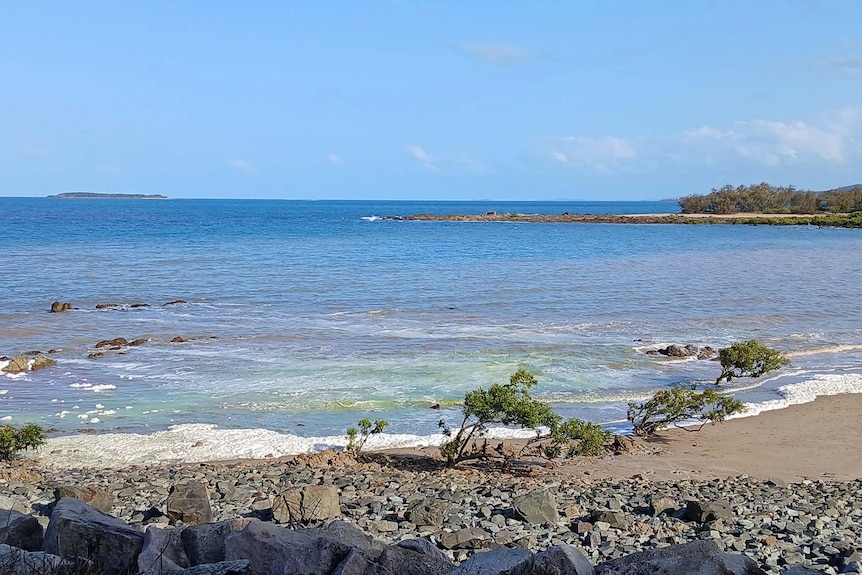
The water at Half Tide Beach, Hay Point, was a light shade of green and pink with algal blooms. (Featured: Keith Cole)
The cause is not well understood
Eimeo Beach lifeguard Nick Jackson said his team was monitoring the latest algal bloom.
“They are quite thick blankets of algae that come ashore,” he said.
“We’ve seen several times a year that it depends on the weather, the nutrients in the water and everything.”
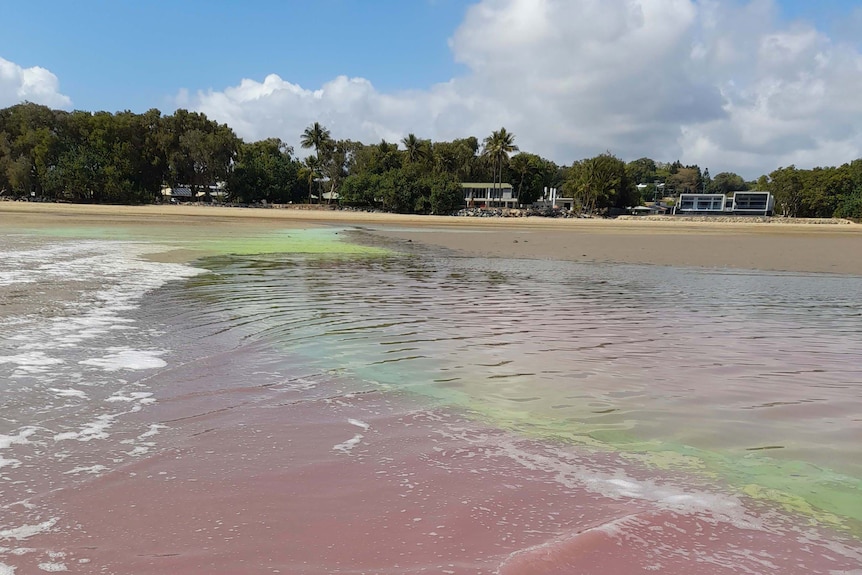
A bacterial bloom has turned the water at Shoal Point, Mackay, shades of pink and green. (Submitted by: Cassandra Ramsey)
Barbara Robson, a coastal biogeochemical modeler at the Australian Institute of Marine Science (AIMS), said the cause of the “slightly toxic” blooms was not well understood.
“They occur naturally, particularly in low-nutrient waters, because they can use nitrogen from the atmosphere, whereas most algae can only use nitrogen in the water,” Dr Robson said.
He said it’s possible they’re affected by coastal runoff because they need phosphorus they can’t make on their own.
There are some signs that we may be seeing more blooms, and we’re still investigating why.
They are probably increasing with climate change due to some changes in oceanographic conditions.
#Clues #sea #sawdust #control #crownofthorns #starfish